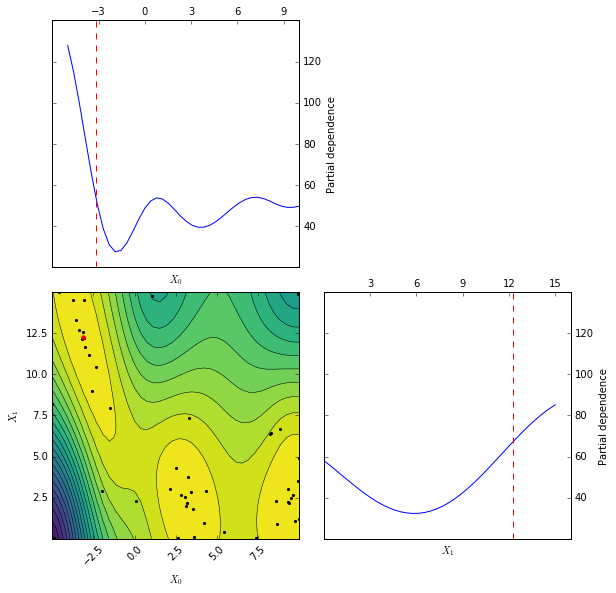Getting started¶
Scikit-Optimize, or skopt, is a simple and efficient library to
minimize (very) expensive and noisy black-box functions. It implements
several methods for sequential model-based optimization. skopt aims
to be accessible and easy to use in many contexts.
The library is built on top of NumPy, SciPy and Scikit-Learn.
We do not perform gradient-based optimization. For gradient-based
optimization algorithms look at
scipy.optimize
here.

Approximated objective function after 50 iterations of gp_minimize.
Plot made using plots.plot_objective.
Finding a minimum¶
Find the minimum of the noisy function f(x) over the range -2 < x < 2
with skopt:
import numpy as np
from skopt import gp_minimize
def f(x):
return (np.sin(5 * x[0]) * (1 - np.tanh(x[0] ** 2)) *
np.random.randn() * 0.1)
res = gp_minimize(f, [(-2.0, 2.0)])
For more control over the optimization loop you can use the skopt.Optimizer
class:
from skopt import Optimizer
opt = Optimizer([(-2.0, 2.0)])
for i in range(20):
suggested = opt.ask()
y = f(suggested)
opt.tell(suggested, y)
print('iteration:', i, suggested, y)
For more read our Bayesian optimization with skopt and the other examples.
